
copyright © Wartime Heritage Association
Website hosting courtesy of Register.com - a web.com company
Wartime Heritage
ASSOCIATION
Remembering
William Albanie (Albany) Comeau
Name:
William Albanie (Albany) Comeau
Rank:
Private
Service Number:
135699
Service:
Headquarters Detachment, 101st Supply Train
26th Infantry Division (the Yankee Division),
US Army, American Expeditionary Forces
Date of Birth:
February 3, 1890
Place of Birth:
Church Point, Nova Scotia
Date of Enlistment:
September 5, 1917
Place of Enlistment:
Massachusetts
Marital Status:
Single
Date of Discharge:
April 29, 1919
Date of Death:
June 19, 1976
Age:
86
Cemetery:
Riverside Cemetery, Elm Street, North Reading, Mass. US
William Albanie (Albany) Comeau was the son of Nicholas Comeau (1857-1927) and Cedulie (Lombard) Comeau
(1864-1932). Albany had eight sisters – Azelle, Evenie, Marie Rose, Lucille, Celenie, Sarah, Virginie and
Bernadette; and two brothers – Adolphe (1894-1979) and Edmond (b. 1896).
Albany’s brother Adolphe enlisted April 29, 1916, with Canadian Expeditionary Forces in ‘C’ Company, 165th
Battalion, but was discharged April 30, 1917, as unfit for service. He did not serve overseas.
Albany moved to the United States at the age of 22 in June, 1912, aboard the SS Prince Arthur from Yarmouth to
Boston. He was living at 894 East Fourth St in South Boston when he completed a US Draft card (1917-1918) on
June 5, 1917.
Enlisting 3 months later, Private Comeau served with the Headquarters Detachment of the 101st Supply Train, a
unit of the 26th Division (The Yankee Division). The Supply Train was essentially a Quartermaster unit. The 101st
was made up of Troop B of the Rhode Island Cavalry, 364 men from 8th Massachusetts Infantry, and 62 men from
Company ‘M’ of the 6th Massachusetts Infantry.
Albany departed France from Brest
on April 6, 1919, on the SS
Winifredian arriving in Boston
April 18, 1919.
On April 25, 1919, a massive
welcome home parade took place
to recognize the valour and
sacrifice the soldiers made for
their country. Approximately
25500 soldiers took part.
Headlines covered the event,
calling it the “Most Glorious Day in
Boston’s History”. Approximately one million cheering spectators lined the 5-mile route. The parade started at
the Massachusetts State House, where governors from the New England States honoured their hometown heroes.
The parade continued along the Boston Common, where sidewalks were packed with fellow citizens. The Division
marched onto Commonwealth Avenue, which was lined with spectators watching from bleachers and rooftops.
The parade ended at Park Square.
Private Comeau was Honourably Discharged four days later on April 29, 1919. He returned to Nova Scotia to visit
his Canadian relatives the year after the war, with record of him returning to the US, crossing at Houlton, Maine
on September 30, 1920.
Albany never married. He lived in Charlestown, at 31 Brighton St, Boston, Mass, applying for US citizenship on
September 12, 1933, and became a US citizen on March 5, 1934. On his petition he listed his employment as a
carpenter and listed two men as witnesses – Edward Gaudet, a carpenter (living at 13 Water House St in
Somerville, Mass.) and Philip E. Babine, also a carpenter (living at 24 Wareham St in Medford, Mass.).
Moving out of Charlestown, he settled in North Reading at a cottage on Travelled Way, on Martins Pond, where he
lived the rest of his life. Albany died at the age of 86 on June 19, 1976, in Winchester, Massachusetts. He is
interred at Riverside Cemetery, on Elm Street in North Reading, Mass.

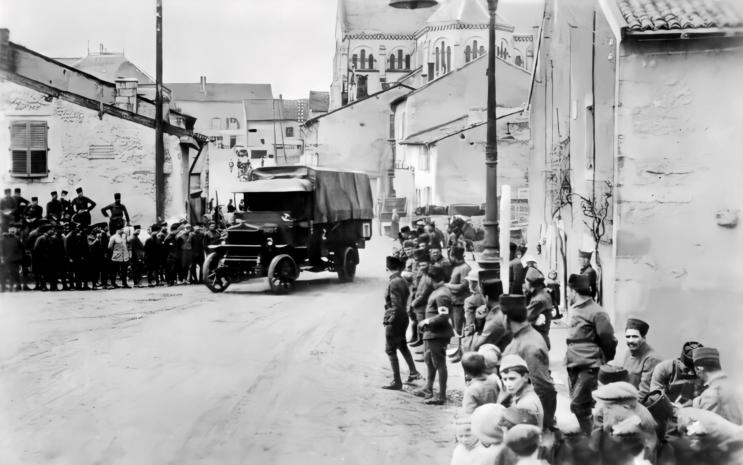
101st Supply Train, 26th Division, on Way to Front, Euville, France, 1918
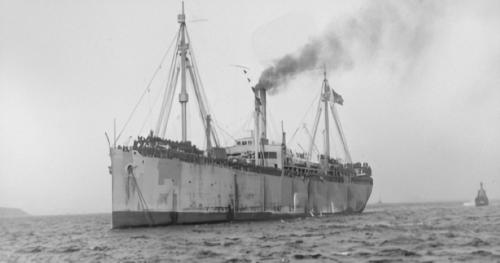
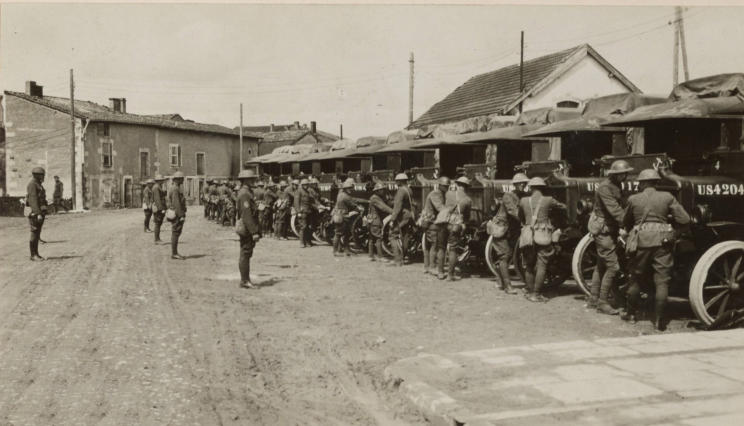
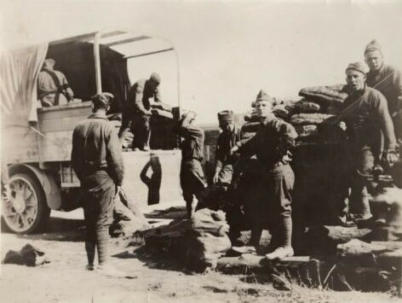
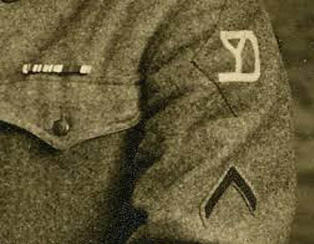
Men of the 101st Supply Train, crank start their British AEC 3-ton Trucks in a French village
101st Supply Train, 26th Division unloading bread for the 104th
Infantry Regiment to use en route to the front.
(Chatillon, France. August 28, 1918)
26th Yankee Division Insignia Patch
The SS Winifredian
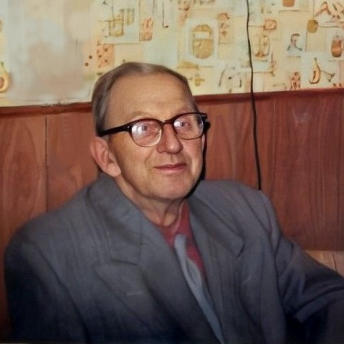
Riverside
Cemetery,
Elm
Street,
North
Reading,
Mass. US


- World War I - Menu
- WWI Stories and Articles
- Photos - Yarmouth Soldiers
- Selection of World War I Songs
- WWI Casualties of Yarmouth, NS
- Those Who Served - Yarmouth, NS
- WWI Casualties Digby Co. NS
- WWI Casualties Shelburne Co. NS
- Merchant Mariners (1915) Yarmouth, NS
- Canadian Forestry Corps - Non Yarmouth Birth/Residence Enlistments
- US Draft Registry - Yarmouth NS Born


- World War II - Menu
- WWII Stories and Articles
- Telegraphist Air Gunners
- WWII Casualties of Nova Scotia
- US Casualties with NS Connection
- Far East/Pacific Casualties with NS Connection
- Merchant Navy Casualties Nova Scotia
- Nova Scotia WWII Casualties Holten Canadian War Cemetery
- D-Day Casualties - Nova Scotia
- CANLOAN Program Casualties - Nova Scotia
- Battle of the Bulge Casualties - Nova Scotia
- WWII Casualties Yarmouth NS
- Yarmouth Casualties - RCAF RAF Canadian Army WWII
- Yarmouth Co., Marriages WWII
- Casualties Non-Born/Residents with Connection to Yarmouth Co., Nova Scotia.
- WWII Casualties Digby Co., NS
- Non-Nova Scotian WWII Casualties Buried in Nova Scotia
- WWII RCAF Casualties Aged 16-18
- Brothers/Sisters Who Served - World War II














